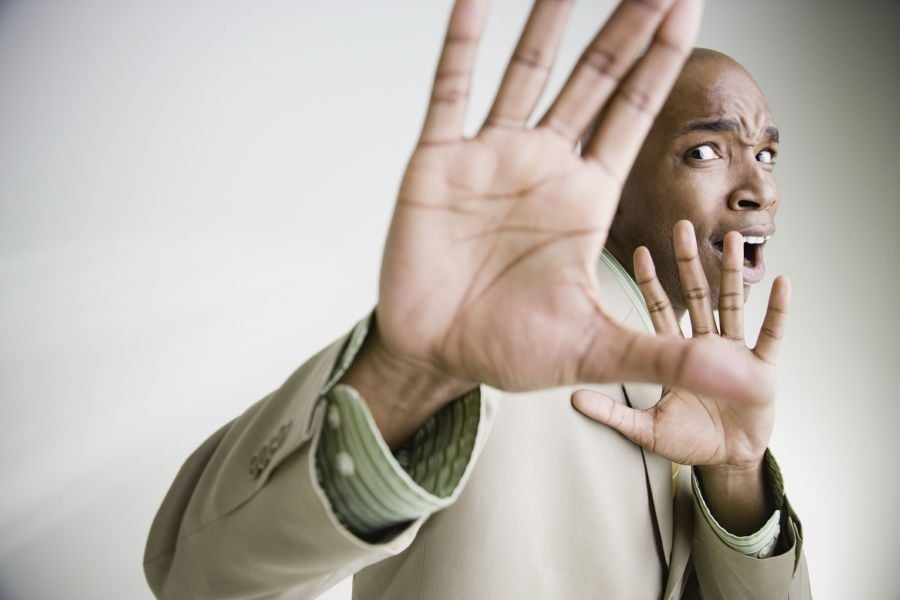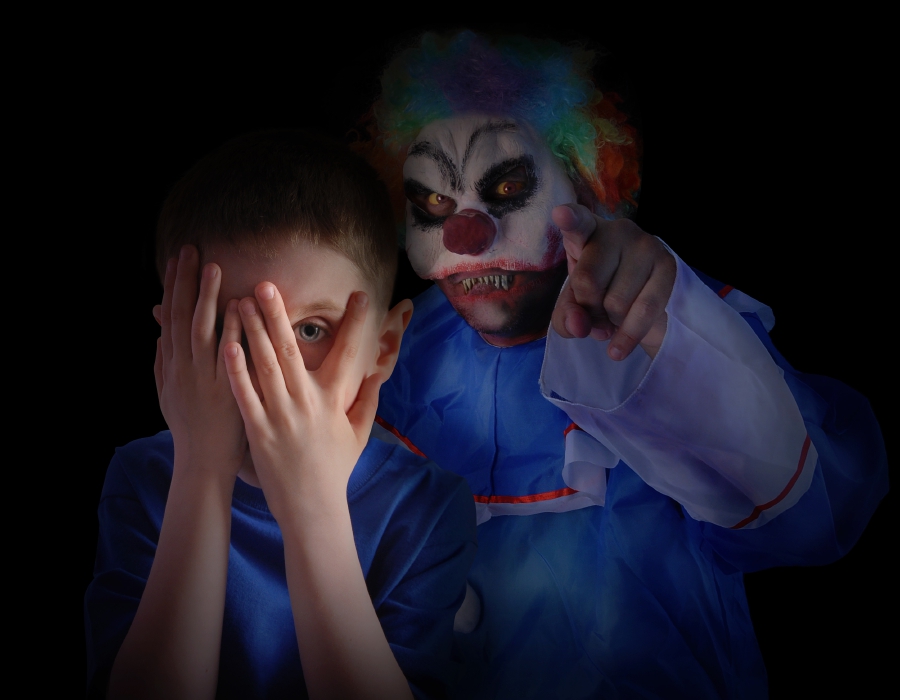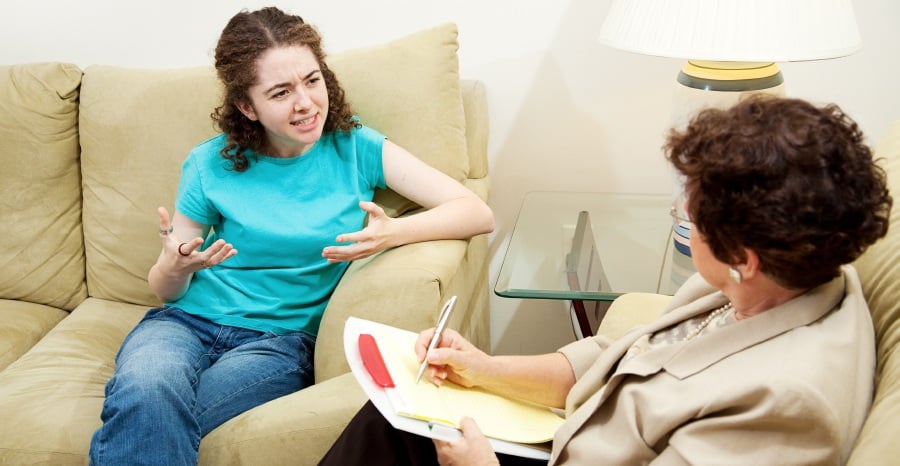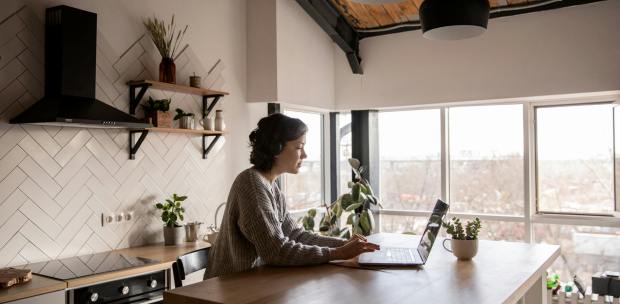
ESHAN Md Zain (not his real name), 45, welcomed the New Year on a happy note as he had just been promoted to regional manager at his company.
Although Eshan was excited about the promotion as well as the perks and benefits that came with it, one thing made him lose sleep for weeks.
As regional manager, he would have to frequently fly to Asian countries and that scared him the most because he suffers from aviophobia or fear of flying in an aircraft.
On his maiden flight, he froze on the stairs leading up to the aircraft and had to turn back. On the next flight, he forced himself to overcome his fear after his superior told him that he might be demoted. He boarded the aircraft but as soon as he heard the engine revving up, he had a panic attack and had to disembark.
Danial Aris (not his real name), 50, is a high-ranking police officer who suffers from social phobia. He always gets the jitters when he has to do an inspection of troops. He finds it disabling when he has to attend formal dinners with other high-ranking officers. He has tried to avoid such events but was warned of disciplinary action. Life for Danial is full of self-doubt and he is depressed and considering leaving the force.

PHOBIA DEFINED
Many people have strange, unexplained fears of something, be it creepy crawlies, extreme heights and even clowns. Although the fear does not occur frequently and does not affect our daily routine, it will likely limit our activities.
Professor Dr Philip George, an addiction specialist and consultant psychiatrist from the Clinical Medical School of International Medical University, says irrational fear – as what Eshan and Danial are experiencing – is a characteristic of phobia.
Phobia or phobic disorder is an anxiety disorder characterised by an irrational fear of an object or situation. The fear is way out of proportion to the objective risk of the object or situation.
“For example, a person who is fearful of the lift or escalator will only access the higher floors of a building using the stairs. A patient with a phobia of cats will drive a long and complex route via highways so that she doesn’t encounter a cat by the roadside or one crossing the street.
“So, people who are phobic will often shape their lives to avoid what they consider to be dangerous. The phobic patient can also experience anticipatory anxiety where there is a prospect of encountering the phobic object or situation,” he says, adding that a person can have more than one phobia.
A phobia is often named using Greek nomenclature, but in clinical practice, it is defined as a “phobia to… (the object or situation)”.

PRONE TO PHOBIAS
When exposed to the situation or object of fear, the phobic will experience extreme anxiety or a panic attack, with accompanying physical and psychological symptoms (refer to infographics). When it comes to phobia, the likelihood of being susceptible to it is about the same between men and women, and it develops from various factors including experiences from childhood and adolescence.
“Except for social phobia (also called social anxiety disorder), simple or specific phobias and agoraphobia occur more in females. The prevalence of specific phobias is about 10 per cent in males and 15 to 20 per cent in females, and can be a continuation of childhood phobias.
“Children who have a close relative with an anxiety disorder are at risk of developing a phobia. Sometimes the phobia is a form of defence mechanism such as the case study of Little Hans by Sigmund Freud in 1909.”
In the study, Little Hans, who was 5 years old then, had a morbid fear of horses but Freud identified it as a symbolic fear of his father instead. “The object that is feared is really symbolic of something else more threatening and dangerous,” says Dr George.
Personality-wise, people who are categorised under “personality disorder cluster C” – who are mostly anxious and fearful – may have a higher risk of developing phobias. The specific personality disorders in Cluster C are avoidant personality, dependent personality and obsessive compulsive personality disorder.
“People with ongoing medical conditions or health concerns often have phobias too.”

SOCIAL AND HEALTH EFFECTS
The limitations resulting from a phobia can cause severe anxiety and depression, and eventually social isolation that will have an impact on quality of life. Physically, the experience of recurring chronic anxiety and panic attacks due to phobia can lead to cardiovascular damage, gastrointestinal problems such as ulcers and irritable bowel syndrome, and decreased fertility, says Dr George.
“Reactions to phobias can also lead to accelerated ageing and premature death. They can impact long-term memories, reduce immunity and increase the risks of other medical issues like infections and cancer.
“People with social phobia for instance often abuse alcohol or sedative drugs as a form of self-medication, leading to additional complications.”

TREATMENTS
After a course of anti-depressants, relaxation and cognitive therapies, Eshan started to go on short flights before managing longer ones and keep his position in his company. Danial, on the other hand, was started on medication and psychological therapy. He gradually overcame his anxiety and phobia, and can now do his work more efficiently.
Treating a phobia depends on how much of a problem it is. If what is feared can easily be avoided — a wild animal or a natural disaster that you can stay away from — then treatment may not really be needed.
Cognitive behavioural therapy is the most commonly used therapeutic treatment for phobias. It involves exposure to the source of the fear in a controlled setting. This treatment can de-condition people and reduce anxiety.
“The therapy focuses on identifying and changing negative thoughts, dysfunctional beliefs and negative reactions to the phobic situation. Desensitisation is where we start by exposing the individual to the object or situation gradually, starting with their mind and addressing the anxiety that is provoked with relaxation techniques and then progressing on incrementally. New cognitive behavioural therapy techniques use virtual reality technology to expose people to the sourceof their phobias safely.”
Medication such as anti-depressants and anxiolytics also play an important role. Anti-depressants are a better option as anxiolytics can be dependence forming.
The cost of these treatments are relatively cheap in public healthcare facilities but getting an early appointment and seeing the same therapist as well as finding a clinical psychologist to perform cognitive behavioural therapy may be a challenge. At private facilities, the cost can be high and because most insurance companies do not cover mental health treatment, it can be out of reach to most people.

SEEK HELP
Stigma is the main reason that hinders people from seeking treatments. The fear of having to rely on medication for the rest of their lives is another common excuse not to get treated.
So, what should a person do when he thinks he has a phobia?
“First, see your general practitioner or primary care doctor to rule out other medical conditions like heart disease, endocrine disorder or other conditions. If a medical condition is ruled out, it is important to consider seeing a psychiatrist or clinical psychologist for further assessment and treatment.
“The duration of treatment largely depends on how soon treatment is sought. If the phobia is detected early, the minimum period of treatment can range from six to nine months.”

COMMON FEARS
THERE are three common types of phobias:
1. Simple or specific phobias = persistent and excessive fear of any object or situation like insects, animals, heights or enclosed spaces.
2. Agoraphobia = fear of crowded places or wide open spaces.
3. Social phobias = a group of fears related to meeting, speaking or eating with people.
THE CAUSES
- Childhood experiences
- Distressing events like near death experiences
- Exposures to confined spaces, extreme heights or animal/insect bites
- Traumatic brain injuries
- Substance abuse
- Depression
THE SYMPTOMS
Physical
- Sweating
- Trembling
- Hot flushes or chills
- Shortness of breath / difficulty in breathing
- A choking sensation
- Rapid heartbeat
- Dizziness and nausea
- Numbness
- Dry mouth
- Ringing in the ears
- Confusion / disorientation
Psychological
- Fear of losing control
- Fear of fainting
- Feelings of dread
- Fear of dying

MODERN PHOBIA
1. Antefamaphobia - fear that people are talking about you
2. Allodoxaphobia - fear of opinions
3. Kainolophobia - fear of anything new
4. Carbophobia - fear of carbohydrates
5. Rhytiphobia - fear of getting wrinkles
6. Politicophobia - fear or abnormal dislike of politicians
7. Euphobia - fear of good news
8. Editiovultaphobia - fear of Facebook or having your life lived in front of “friends” you have never met or would want to meet
9. Editophobia - fear of being edited or deleted
10. Nomophobia - No-mobile-phone-phobia
Source: Adapted from www.mirror.co.uk
TIPS
WHEN in a panic attack because of a phobia:
- Do a breathing exercise if you’re breathing quickly during the panic attack. Try this:
1. Sit or lie down comfortably with hands on your stomach.
2. Take a quick breath through your nose with eyes open.
3. Breathe out slowly, deeply and gently through your mouth with your eyes closed.
4. Repeat this for at least 10 times
- Keep calm. Tell yourself that the symptoms you're experiencing are caused by anxiety and not a sign of anything harmful happening. It will pass. Remind yourself that it has happened before and like then, it will subside.
- Try to keep doing things at hand. If possible, don't leave the situation until the anxiety has subsided.




